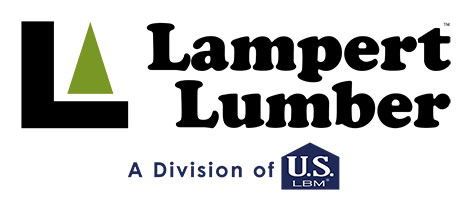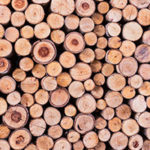A Brief Guide to Lumber
Everything You Need to Know to Pick the Right Lumber for Your Home

If you’re not a lumber expert, selecting the right kind of lumber for your home improvement or DIY project can be difficult. From measurements to lumber grades to types of wood, there’s a lot to know before you start working with wood.
Understanding the Different Types of Lumber
There are endless varieties of lumber, each with their own aesthetic and best use. While the lumber you picked might have the warm tones you were looking for to lighten up the room, the softness of the wood might make it unusable for fine woodwork. Avoid finding yourself in this predicament with the help of our guide below.
Softwood
As the name implies, softwood can easily be dented with a fingernail. These planks absorb and lose water much easier than their hardwood cousins and thus require extra care to ensure longevity. However, they are also much cheaper than hardwoods because they require less time to grow. This makes softwoods best suited for construction and home DIY projects. Softwoods come from trees that have needles rather than leaves, including:
- Pine
- Cedar
- Douglas Fir
- Hem Fir
Hardwood
Hardwood comes from deciduous trees with broad leaves. They aren’t easily dented, making them great for furniture, cabinetry, and flooring. These lumber types take a long time to grow, making them more expensive, and therefore, are predominantly used in fine woodworking. The most common types of hardwood are:
- Maple
- Oak
- Poplar
- Cherry
Engineered Lumber
Engineered lumber combines strands, particles, or veneers with the help of adhesives to create composite materials perfect for construction and industrial products. These types of lumber are able to create precise specifications and are all tested to reach national standards. A few types of engineered lumber are:
- Plywood
- MDF (Medium Density Fiberboard)
- OSB (Oriented Strand Board)
- LVL (Laminated Veneer Lumber)
Common Lumber Defects
All lumber is graded based on appearance and defects to give an overall judgement of quality. The following defects are commonly found in lumber and decrease their grade. Depending on what you intend to use your lumber for, these defects might not impair your craftsmanship. Common defects include:
- Bowing- The lumber is warped.
- Splitting- The wood is cracked through the entire thickness, typically at the pieces edge.
- Checking- There is splitting at growth rings that doesn’t pass through the entire thickness.
- Knots- Darker colored circles, knots can detract from appearance but don’t necessarily detract from the lumber’s integrity. While tight knots are fine, loose knots can fall out and damage the woods stability.
Understanding Lumber Dimensions
If you’ve ever purchased lumber, you’ve heard the phrases “2×2” and “2×4” thrown about by your local lumberyard. If your like any normal person, you’d assume a 2×2 piece of wood is in fact 2 inches in width by 2 inches in length.
However, this is actually incorrect. A 2×2 plank will actually be about 1.5×1.5 inches. The reason for this is that trees retain a lot of water. When they are cut they are full of moisture that evaporates as they are transported to your lumberyard. This means that when they are cut they are a true 2×2 but will dry about half an inch.

